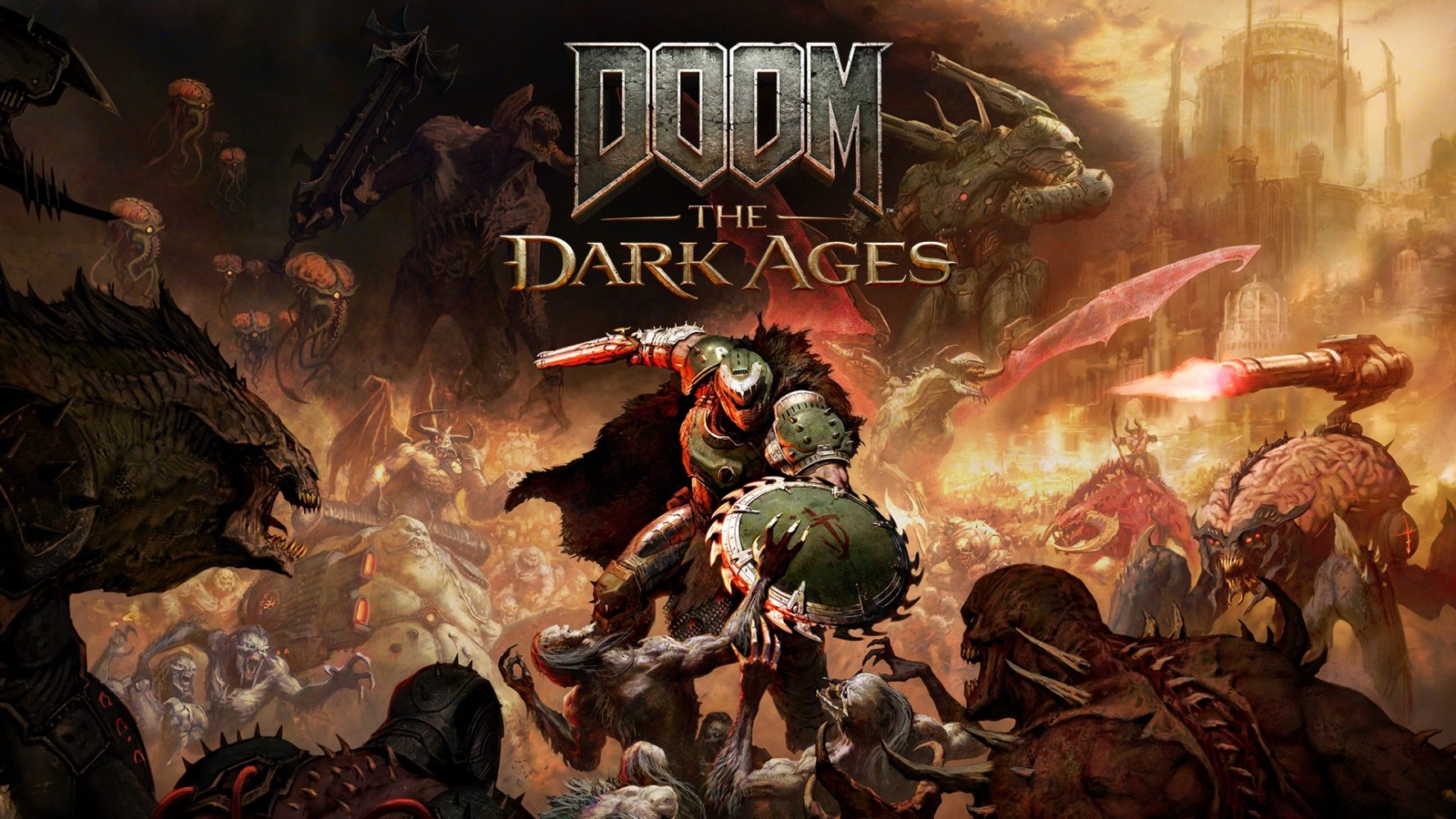Public vs. Private Blockchains: Navigating the Decentralized Landscape
Abstract: This post provides an in‐depth exploration of blockchain technology, comparing public and private blockchains while examining their core features, use cases, and challenges. We discuss their history, technical aspects, regulatory challenges, and future outlook. In addition, this article highlights hybrid models and offers practical examples, supported with tables, bullet lists, and relevant links such as What is blockchain and Ethereum. Drawing on insights from sources like public vs. private blockchains and industry discussions on decentralization and sustainability, this post serves as a comprehensive guide for organizations and developers navigating the evolving decentralized landscape. Introduction Blockchain technology has rapidly evolved from a niche idea to a transformative force impacting industries ranging from finance to supply chain management. Central to today's decentralized debate is the choice between public and private blockchains. Each model comes with unique advantages and challenges, and selecting the right approach can determine the success of a project. In this post, we dive into the differences between these two systems, its implications for businesses, and what the future might hold with emerging hybrid solutions. Our discussion builds on the core topics of decentralization, transparency, scalability, energy consumption, and regulatory compliance. With increased global adoption, understanding these blockchain frameworks is essential for both technical professionals and business leaders. Background and Context The blockchain is a distributed ledger that records transactions in an immutable, sequential manner across a network of nodes. Initially popularized by Bitcoin, blockchain technology has expanded to include platforms like Ethereum, enabling smart contracts and decentralized applications (dApps). Key historical milestones and definitions are summarized below: Distributed Ledger Technology (DLT): A database that is consensually shared and synchronized across multiple sites, institutions, or geographies. Blockchain: A type of DLT consisting of blocks linked in chronological order, ensuring transparency and resistance to tampering. Smart Contracts: Self-executing contracts with the terms directly written into lines of code. Understanding these foundational elements helps explain the diverging paths of public and private blockchains. For instance, while public networks like Bitcoin are designed to be open and decentralized, private networks offer controlled access suited for enterprise needs. Core Concepts and Features Below is an overview and comparison of key concepts across public and private blockchains, along with their overlapping characteristics. Public Blockchains Characteristics: Openness and Decentralization: Anyone can join, validate transactions, and even contribute to development. Transparency: All transactions are visible to participants, which enhances trust but may also expose privacy concerns. Security: Large decentralized networks using consensus mechanisms such as Proof of Work or Proof of Stake secure the network. Advantages: High Transparency: Every transaction adds to a global, verifiable record. Robust Decentralization: Distributed nodes minimize the risk of single-point failures. Censorship Resistance: No central authority controls the network, making it difficult to censor or alter records. Innovation: Open-source frameworks foster community-driven development of dApps and protocols. For example, learn more about Ethereum’s decentralized innovations. Challenges: Scalability: Public blockchains often process a limited number of transactions per second, causing delays during high network load. High Energy Consumption: Especially in Proof-of-Work systems like Bitcoin mining, energy demands remain a growing concern. Limited Privacy: While identities are pseudonymous, the inherent transparency can be a hurdle for privacy-sensitive applications. Private Blockchains Characteristics: Restricted Access: Only approved entities can participate, which is ideal for industries needing confidentiality. Controlled Governance: Enterprises can tailor consensus mechanisms and rules to best fit their operational needs. Advantages: Enhanced Privacy & Control: By limiting access, private blockchains help organizations meet strict regulatory standards. Higher Efficiency: Fewer nodes enable faster transaction processing and better scalability. Customizability: Businesses can dynamically modify the network’s features, including consensus methods and transaction rules. Challenges: Centralization Risks: While faster, centralized governance may lead to trust issues when compared with trustless public solutions. Reduced Security Through Collusion: With smaller networks, there is an increased risk of insider manipulation or collusion among partic

Abstract:
This post provides an in‐depth exploration of blockchain technology, comparing public and private blockchains while examining their core features, use cases, and challenges. We discuss their history, technical aspects, regulatory challenges, and future outlook. In addition, this article highlights hybrid models and offers practical examples, supported with tables, bullet lists, and relevant links such as What is blockchain and Ethereum. Drawing on insights from sources like public vs. private blockchains and industry discussions on decentralization and sustainability, this post serves as a comprehensive guide for organizations and developers navigating the evolving decentralized landscape.
Introduction
Blockchain technology has rapidly evolved from a niche idea to a transformative force impacting industries ranging from finance to supply chain management. Central to today's decentralized debate is the choice between public and private blockchains. Each model comes with unique advantages and challenges, and selecting the right approach can determine the success of a project. In this post, we dive into the differences between these two systems, its implications for businesses, and what the future might hold with emerging hybrid solutions.
Our discussion builds on the core topics of decentralization, transparency, scalability, energy consumption, and regulatory compliance. With increased global adoption, understanding these blockchain frameworks is essential for both technical professionals and business leaders.
Background and Context
The blockchain is a distributed ledger that records transactions in an immutable, sequential manner across a network of nodes. Initially popularized by Bitcoin, blockchain technology has expanded to include platforms like Ethereum, enabling smart contracts and decentralized applications (dApps).
Key historical milestones and definitions are summarized below:
- Distributed Ledger Technology (DLT): A database that is consensually shared and synchronized across multiple sites, institutions, or geographies.
- Blockchain: A type of DLT consisting of blocks linked in chronological order, ensuring transparency and resistance to tampering.
- Smart Contracts: Self-executing contracts with the terms directly written into lines of code.
Understanding these foundational elements helps explain the diverging paths of public and private blockchains. For instance, while public networks like Bitcoin are designed to be open and decentralized, private networks offer controlled access suited for enterprise needs.
Core Concepts and Features
Below is an overview and comparison of key concepts across public and private blockchains, along with their overlapping characteristics.
Public Blockchains
Characteristics:
- Openness and Decentralization: Anyone can join, validate transactions, and even contribute to development.
- Transparency: All transactions are visible to participants, which enhances trust but may also expose privacy concerns.
- Security: Large decentralized networks using consensus mechanisms such as Proof of Work or Proof of Stake secure the network.
Advantages:
- High Transparency: Every transaction adds to a global, verifiable record.
- Robust Decentralization: Distributed nodes minimize the risk of single-point failures.
- Censorship Resistance: No central authority controls the network, making it difficult to censor or alter records.
- Innovation: Open-source frameworks foster community-driven development of dApps and protocols. For example, learn more about Ethereum’s decentralized innovations.
Challenges:
- Scalability: Public blockchains often process a limited number of transactions per second, causing delays during high network load.
- High Energy Consumption: Especially in Proof-of-Work systems like Bitcoin mining, energy demands remain a growing concern.
- Limited Privacy: While identities are pseudonymous, the inherent transparency can be a hurdle for privacy-sensitive applications.
Private Blockchains
Characteristics:
- Restricted Access: Only approved entities can participate, which is ideal for industries needing confidentiality.
- Controlled Governance: Enterprises can tailor consensus mechanisms and rules to best fit their operational needs.
Advantages:
- Enhanced Privacy & Control: By limiting access, private blockchains help organizations meet strict regulatory standards.
- Higher Efficiency: Fewer nodes enable faster transaction processing and better scalability.
- Customizability: Businesses can dynamically modify the network’s features, including consensus methods and transaction rules.
Challenges:
- Centralization Risks: While faster, centralized governance may lead to trust issues when compared with trustless public solutions.
- Reduced Security Through Collusion: With smaller networks, there is an increased risk of insider manipulation or collusion among participants.
- Limited Community Innovation: The controlled environment might stifle the broad-based collaboration typically seen with open-source projects.
Comparative Table
Below is a concise table summarizing the differences:
| Feature | Public Blockchains | Private Blockchains |
|---|---|---|
| Access | Open to all | Restricted to authorized users |
| Transparency | High, with full visibility of transactions | Limited; confidential transactions |
| Security | Decentralized, robust consensus-based security | Controlled; relies on trust among known participants |
| Scalability | Often limited by consensus mechanisms | High efficiency; fewer nodes involved |
| Energy Consumption | Generally high (especially Proof-of-Work) | Moderate; uses tailored consensus mechanisms |
| Governance | Decentralized; community-driven | Centralized or consortium-based |
| Innovation | Open-source ecosystem fosters rapid innovation | Customizable but might limit external contributions |
Applications and Use Cases
Public Blockchain Use Cases
Many public blockchains underpin widely used applications due to their decentralized nature:
- Cryptocurrency Transactions: Platforms like Bitcoin facilitate peer-to-peer transfers without a centralized intermediary.
- Decentralized Applications (dApps): Ethereum supports myriad dApps ranging from gaming to finance, using smart contracts for automation.
- Supply Chain Transparency: Public blockchains enable real-time tracking available to multiple stakeholders, an approach expanded upon in blockchain in supply chain.
Private Blockchain Use Cases
Private blockchains tend to be tailored for particular enterprise necessities:
- Banking & Finance: Institutions require control and regulatory compliance for secure transactions.
- Healthcare: Patient data can be managed securely and confidentially within controlled networks.
- Enterprise Resource Planning: Businesses leverage private blockchains to manage logistics, intellectual property rights, and internal audits.
Hybrid Approaches
Hybrid or consortium blockchains meld features from both public and private frameworks. For example, a consortium blockchain enables a group of companies to share transparency among themselves while keeping sensitive operations private. This model paves the way for supplier networks or joint ventures and can incorporate features from projects such as arbitrum and community governance.
Challenges and Limitations
Despite the promise of blockchain technology, several technical and practical challenges persist:
- Scalability Obstacles: Public blockchains face issues such as transaction backlogs in high-pressure scenarios. Private blockchains mitigate this with fewer nodes, but they sacrifice the safety net of broad decentralization.
- Energy and Sustainability Concerns: Proof-of-Work networks demand significant power, prompting research into sustainable alternatives like Proof-of-Stake or tailored consensus. For more on sustainable initiatives, see sustainable blockchain practices.
- Regulatory and Compliance Risks: For private blockchains, varying laws and regulations may require integrated compliance tools, particularly in heavily regulated industries.
- Security Tradeoffs: While public networks benefit from widespread, decentralized verification, private blockchains’ restricted nature might expose vulnerabilities to insider threats.
- Adoption Barriers: Transitioning legacy systems to blockchain can entail steep learning curves, expensive initial setups, and integration complexities.
Bullet List of Key Challenges:
- Scalability limitations on public networks
- High energy consumption in Proof-of-Work systems
- Privacy vs. transparency trade-offs
- Regulatory and compliance barriers for enterprise applications
- Security vulnerabilities in smaller, private networks
Future Outlook and Innovations
The blockchain ecosystem continues to evolve rapidly, driven by both technological innovation and market demands. Here are some potential future trends and advancements:
Emerging Trends
- Hybrid Blockchain Solutions: The blending of public and private blockchain features is likely to become more prevalent, allowing organizations to reap the benefits of both structures.
- Layer 2 Scaling Solutions: Technologies like roll-ups (e.g., Arbitrum) are already being deployed to enhance throughput on public networks, thereby resolving scalability issues while reducing energy consumption.
- Interoperability Protocols: With many blockchain platforms coming online, cross-chain communication protocols will be critical for allowing seamless data and asset transfers.
- Enhanced Privacy Mechanisms: Advanced cryptographic solutions, such as zero-knowledge proofs and secure multiparty computation, will be incorporated to balance transparency and confidentiality.
- Green Blockchain Practices: As environmental concerns heighten, the industry will continue to explore energy-efficient consensus mechanisms and sustainable practices. More details can be found in sustainable blockchain practices.
Innovations on the Horizon
- Decentralized Finance (DeFi): Public blockchains continue to revolutionize financial services, making decentralized exchanges and yield farming more robust. Relevant discussions include arbitrum and de-fi yield.
- Regulatory Compliance Tools: Private and consortium blockchains are developing integrated auditing and compliance features to aid sectors like healthcare and finance.
- Tokenization and Digital Identity: New models for digital asset management and identity verification are emerging, potentially transforming how personal data is handled across platforms.
- Ecosystem Partnerships: Collaborative ecosystems, such as consortium blockchains, will continue to flourish as industries find shared value in transparent and secure data sharing.
Insights from the Developer Community
The developer community is abuzz with discussions on blockchain funding and licensing innovations. For instance:
- The Future of Blockchain Funding and Decentralized Exchanges details trends in blockchain investment.
- Open Source Funding and Blockchain Project Funding: Building a Community-Driven Future emphasizes innovative funding models.
- Exploring Open Source Licensing: The New Frontier of Blockchain offers insights into licensing in this domain.
These discussions contribute to a broader understanding of how blockchain technology will adapt to real-world challenges while remaining scalable, secure, and sustainable.
Summary
In conclusion, navigating between public and private blockchains depends on the specific needs of the application. Public blockchains offer unparalleled decentralization and trust but come with scalability and energy challenges, while private blockchains provide greater control, efficiency, and privacy, albeit at the cost of some decentralization and community involvement.
Organizations must weigh factors such as regulatory compliance, scalability needs, and security considerations when choosing a blockchain model. Hybrid approaches further blur the lines between these paradigms, offering tailored solutions that combine the best of both worlds.
Below is a summary bullet list of factors essential for making an informed choice:
- Purpose & Requirements: Identify whether transparency or confidentiality is paramount.
- Scalability Needs: Choose if high transaction volumes require faster processing.
- Regulatory Considerations: Ensure compliance within the specific industry framework.
- Innovation & Community Influence: Evaluate the benefits of open-source innovation against controlled development.
As blockchain technology matures, innovations such as Layer 2 scaling solutions, enhanced privacy protocols, and interoperability standards will further reshape how decentralized systems operate. By aligning blockchain choice with organizational goals, businesses can leverage these transformative technologies to create robust, secure, and sustainable solutions.
For further reading on related topics, you may explore these authoritative sources:
Additionally, from the broader blockchain developer community, insights on projects such as:
- Exploring Stellar Java: An Open Source Powerhouse in Blockchain Innovation
- Gitcoin Pioneering Open Source Innovation
- Understanding the Tax Implications of GitHub Sponsors
provide useful context on funding and licensing which intersect with blockchain choices.
Conclusion
Blockchain technology is at a crossroads. Whether one leans towards public blockchains for their unmatched transparency and decentralization or toward private networks for security, speed, and privacy, each offers distinct advantages and trade-offs. In examining these paradigms—from concrete definitions and real-life use cases, through challenges like scalability and energy consumption, to promising innovations such as hybrid models and Layer 2 solutions—we gain a holistic view of the decentralized landscape.
For businesses looking to integrate blockchain, the key lies in aligning technology choices with core objectives and industry requirements. By understanding the differences between public and private blockchains, as well as keeping abreast of emerging trends like hybrid approaches and advanced regulatory tools, organizations can make informed decisions that drive efficiency, security, and sustainable growth.
As we continue to witness rapid developments in both technology and regulatory frameworks, the path forward lies in collaboration, innovation, and adaptability. In the dynamic world of blockchain, the ability to leverage transparent, decentralized networks while ensuring privacy and compliance will define the future of digital interactions.
Keywords: public blockchain, private blockchain, hybrid blockchain, decentralization, smart contracts, scalability, transparency, energy consumption, regulatory compliance, blockchain innovation.
By comprehensively exploring both public and private blockchains, this guide aims to equip you with the knowledge necessary to navigate the decentralized landscape. Whether you are a developer, entrepreneur, or executive, the future of blockchain awaits—robust, secure, and built on trust.
Happy innovating!


















































-Reviewer-Photo-SOURCE-Julian-Chokkattu-(no-border).jpg)























































































































![[The AI Show Episode 146]: Rise of “AI-First” Companies, AI Job Disruption, GPT-4o Update Gets Rolled Back, How Big Consulting Firms Use AI, and Meta AI App](https://www.marketingaiinstitute.com/hubfs/ep%20146%20cover.png)






























































































































![Life in Startup Pivot Hell with Ex-Microsoft Lonewolf Engineer Sam Crombie [Podcast #171]](https://cdn.hashnode.com/res/hashnode/image/upload/v1746753508177/0cd57f66-fdb0-4972-b285-1443a7db39fc.png?#)














































-Nintendo-Switch-2-Hands-On-Preview-Mario-Kart-World-Impressions-&-More!-00-10-30.png?width=1920&height=1920&fit=bounds&quality=70&format=jpg&auto=webp#)













.jpg?width=1920&height=1920&fit=bounds&quality=70&format=jpg&auto=webp#)














































































_Andrey_Khokhlov_Alamy.jpg?width=1280&auto=webp&quality=80&disable=upscale#)


_Aleksey_Funtap_Alamy.jpg?width=1280&auto=webp&quality=80&disable=upscale#)
































































































![Some of the best accessories to pair with your Pixel 9 [Video]](https://i0.wp.com/9to5google.com/wp-content/uploads/sites/4/2024/10/Accessories-Header.jpg?resize=1200%2C628&quality=82&strip=all&ssl=1)












![Apple Foldable iPhone to Feature New Display Tech, 19% Thinner Panel [Rumor]](https://www.iclarified.com/images/news/97271/97271/97271-640.jpg)
![Apple Developing New Chips for Smart Glasses, Macs, AI Servers [Report]](https://www.iclarified.com/images/news/97269/97269/97269-640.jpg)
![Apple Shares New Mother's Day Ad: 'A Gift for Mom' [Video]](https://www.iclarified.com/images/news/97267/97267/97267-640.jpg)



































































































